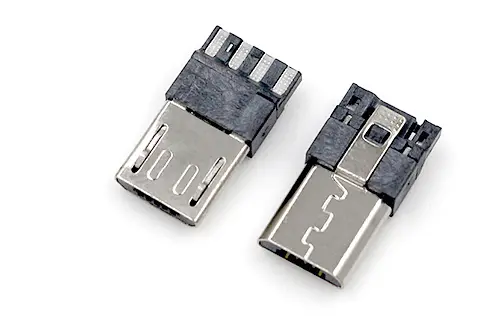How To Make Precise Parts and Mold Cavities
Creating precise parts and mold cavities is essential for various industries, including automotive, aerospace, and medical. When it comes to manufacturing, accuracy and precision are paramount. Whether you鈥檙e producing intricate components for a spacecraft or intricate molds for medical equipment, achieving precision is crucial. In this article, we鈥檒l explore the steps and techniques to create precise parts and mold cavities, ensuring high-quality products and smooth production processes.
Understanding the Importance of Precision

Precision in manufacturing plays a crucial role in ensuring the overall quality of the end product. It directly impacts the functionality, reliability, and longevity of the parts or mold cavities. Inaccurate dimensions or flawed mold cavities can lead to faulty products, increased production costs, and compromised safety standards. Furthermore, precise parts and mold cavities are essential for achieving tight tolerances and meeting rigorous industry standards. Whether it鈥檚 achieving micro-level precision or maintaining consistency on a macro scale, understanding the importance of precision is the first step towards successful manufacturing.
To start with, let鈥檚 look at how to make precise parts.
Creating Precise Parts
Whether you鈥檙e working with metal, plastic, or composite materials, creating precise parts requires meticulous planning and execution. Here are the key steps involved in making precise parts:
Material Selection: The first step in creating precise parts is selecting the right material for the desired application. Consider factors such as mechanical properties, thermal resistance, and environmental stability. The material鈥檚 machinability and compatibility with the manufacturing process should also be taken into account.
Design and Engineering: Once the material is selected, the next step is to create a detailed design and engineering plan. This includes 3D modeling, CAD/CAM programming, and simulation to validate the part鈥檚 dimensions and feasibility. The use of advanced software and prototyping techniques can aid in refining the design and minimizing potential errors.
Machining and Fabrication: Precision machining techniques such as milling, turning, and grinding are employed to shape the raw material into the desired part. Computer numerically controlled (CNC) machines are often used to ensure accuracy and repeatability. Monitoring the machining process and employing quality control measures is essential to maintain precise dimensions and surface finishes.
Finishing and Inspection: Once the part is machined, it undergoes finishing processes such as deburring, polishing, and coating to enhance its appearance and performance. Inspection methods such as coordinate measuring, optical scanning, and surface profiling are used to verify the part鈥檚 dimensional accuracy and conformance to specifications.
Assembly and Testing: Assembling the precise parts into the final product or subassembly requires careful handling and alignment. Functional testing and quality checks are conducted to validate the part鈥檚 performance under real-world conditions.
Now, let鈥檚 dive into the process of creating mold cavities with precision.
Making Mold Cavities
Mold cavities are used in various manufacturing processes, including injection molding, thermoforming, and casting. Achieving precise mold cavities is critical for producing high-quality and consistent products. Here are the key steps involved in making mold cavities:
Design and Tooling: The first step in making mold cavities is creating a detailed design and tooling plan. This includes mold flow analysis, gating design, and material selection for the mold base and cavity inserts. The use of advanced mold design software and rapid prototyping can help in optimizing the cavity geometry and minimizing potential defects.
Machining and EDM: Precision machining and electrical discharge machining (EDM) are used to fabricate the mold cavity inserts from tool steel or other mold materials. CNC milling, grinding, and sinker EDM are employed to achieve the desired surface finish and dimensional accuracy. Special attention is given to the core and cavity alignment to ensure uniform filling and part ejection.
Surface Treatment and Polishing: Finishing the mold cavities involves surface treatment techniques such as nitriding, coating, and polishing. These processes enhance the wear resistance, corrosion resistance, and release properties of the mold surfaces. Polishing the cavity surfaces to mirror-like finishes is crucial for minimizing defects and ensuring smooth part ejection.
Assembly and Testing: Assembling the mold cavity inserts into the mold base and establishing the cooling and ejection systems is the final step. The mold is tested for proper alignment, dimensional accuracy, and part quality using trial production runs and in-mold monitoring systems.
In summary, the process of creating precise parts and mold cavities requires a combination of advanced techniques, specialized equipment, and stringent quality control measures. Whether it鈥檚 achieving sub-micron tolerances for precision parts or maintaining uniform filling for mold cavities, attention to detail and expertise are essential. By understanding the importance of precision, selecting the right materials, and employing advanced machining and finishing methods, manufacturers can ensure the consistent quality and functionality of their products.
Precision in manufacturing is not a goal but a necessity. It ensures that the products manufactured are of the highest quality, safe and reliable for use. By focusing on precision in part production and mold cavities, manufacturers can streamline their production processes, reduce waste, and deliver innovative solutions that meet the demands of today鈥檚 industries. Whether it鈥檚 achieving tight tolerances, complex geometries, or intricate surface finishes, the pursuit of precision is a driving force behind technological advancements and global competitiveness.
+86 13433648351





